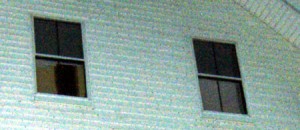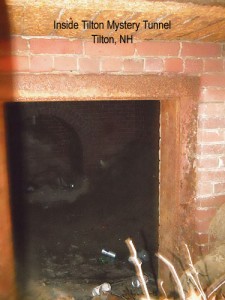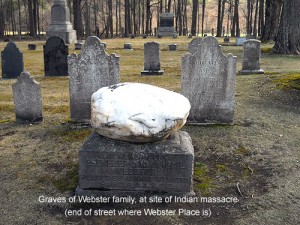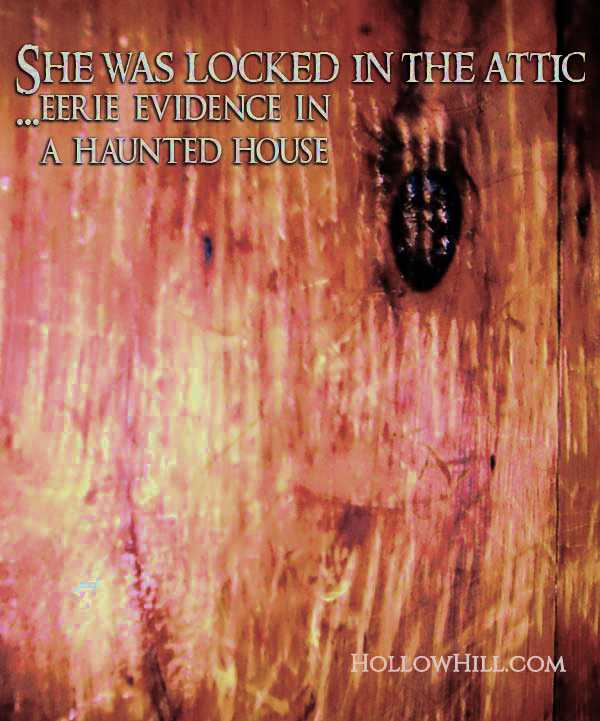 The Franklin Historical Society is located at Webster Place in Franklin, New Hampshire. The building is a Colonial-era home — once the residence of Daniel Webster — with a large Victorian addition.
The Franklin Historical Society is located at Webster Place in Franklin, New Hampshire. The building is a Colonial-era home — once the residence of Daniel Webster — with a large Victorian addition.
After its years as an early American residence (owned by the Haddock and Webster families, among others), the home was used as an orphanage from 1871 through 1958.
Then, from 1960 through 2005, the site was the property of the Sisters of the Holy Cross.
More recently, the building was acquired for the historical society.
In the photo at left, taken on 7 October 2010, you can see just part of the older side of the building. Most of the picture shows the 1860 Victorian addition. (Yes, that is a large orb near one window on the middle floor. Some photos of the front of the building included orbs; most didn’t.)
I was attending a talk by EPNE. They described their experiences during a preliminary ghost investigation at the site, and shared some stories plus video and EVP recordings.
It was a relaxing evening, and a chance to see what’s going on in the field, in general.
After EPNE’s demonstration and a break for refreshments, I explored the building with friends (and fellow researchers) Sean Paradis and Lesley Marden.
Ground Floor: Warm Spot
 First, we focused on a ground floor room with school desks stored in it. (From the front entrance, the room is immediately on your left.)
First, we focused on a ground floor room with school desks stored in it. (From the front entrance, the room is immediately on your left.)
This is part of the Victorian addition to the Haddock-Webster mansion. The two-story addition was constructed in 1860 by Rufus L. Tay, who’d purchased the house and property from Daniel Webster’s son and heir.
(Daguerreotype at left shows Daniel Webster in 1847.)
One rocking chair seemed to have an odd warm spot while the chair next to it was as chilly as we expected, in that unheated room.
However, we hadn’t planned to investigate anything, so we didn’t have a thermometer to verify the effects.
Note: Some researchers believe that a cold spot indicates ghostly energy, but a warm spot suggests more dangerous energy. I haven’t explored either from a good/bad viewpoint.
Nearby, all three of us felt that one spot in the room had unusual energy, but those were merely odd sensations. Those are difficult to document. We detected no unusual EMF with a K-II meter or a hiking compass, at any part of that room.
Lesley and Sean checked the floor immediately upstairs, but the door to the room overhead — and all doors along that side of the house — were locked. They appeared to be used as offices.
The Mezuzah Room
When we explored the rooms that were open upstairs, one room was odd. We’re fairly certain it’s the room where EPNE thought a flashlight had responded to yes/no questions.
What seemed especially strange in Franklin, NH — particularly since it was a home for nuns for 40 years — was the mezuzah at the doorway.
According to Wikipedia:
 A mezuzah is affixed to the doorframe in Jewish homes to fulfill the mitzvah (Biblical commandment) to inscribe the words of the Shema “on the doorposts of your house” (Deuteronomy 6:9).
A mezuzah is affixed to the doorframe in Jewish homes to fulfill the mitzvah (Biblical commandment) to inscribe the words of the Shema “on the doorposts of your house” (Deuteronomy 6:9).
Some interpret Jewish law to require a mezuzah on every doorway in the home apart from bathrooms, and closets too small to qualify as rooms; others view it as necessary only to place one in the front doorway.
I’ve seen many homes that feature a mezuzah at the front door. Others have additional mezuzahs throughout the home.
However, until last night, I’d never seen a home with a mezuzah placed at just one, interior doorway… and none anywhere else. There were no marks where other mezuzahs might have been, either.
So, why would a mezuzah mark the one, apparently most-haunted room in the building? Was it an attempt to keep something out… or something in?
It’s possible that, when the building was divided into apartments or rooms, that room was the residence of someone Jewish, or someone who respected related traditions.
Further investigation might clarify whether or not that room is actually haunted, and why a mezuzah is at that doorframe and no other.
Nevertheless, in a town like Franklin — and particularly in a building where nuns lived — it’s odd.
After getting our general bearings at a site that we’re investigating, the first thing we look for is what’s odd.
The Attic
Among other, lesser architectural anomalies, the attic level stood out as a floor with dark and foreboding energy.
The glow-in-the-dark crucifix on one wall was charming. The row of clothing hooks — at a height used by toddlers or small children — was a little disturbing. I’m not sure what small children would be doing in the attic, particularly with the steep, semi-finished stairway leading to it.
A storage feature in the attic also seemed unusually repellent. A further investigation of the site’s history might reveal more.
All in all, we concluded that the Franklin Historical Society has some odd features worth exploring.
However, it didn’t seem as if the society welcomed additional investigations; EPNE was allowed in as preparation for the historical society’s October presentation.
So, I can’t recommend the Franklin Historical Society’s building as a general research location.
The Window at the Front
After the event concluded, Sean, Lesley and I chatted outside the building. We were startled because we thought we saw a curtain open for a moment at an attic window.
Then, when I was taking pictures, the flash highlighted the actual scene. We realized that it was one of the windows that doesn’t have a curtain; it’s shuttered or otherwise blocked from the inside.
We’re not sure what we thought we saw, but each of us saw it, independently.
That’s the kind of anecdotal evidence that makes ghost hunting interesting, but, as scientific evidence, it has no merit.
The Window at the Back – Who Closed the Curtain?
Sean had parked his car at the back of the building, and Lesley and I felt that we should escort him to it. I’m still not sure why. At the time, it seemed kind of funny, both in an odd and in a ha-ha way.
As we studied the mixed architecture at the back of the building, all of us commented on another attic window.
 It’s indicated by the red arrow in my photo at the right. That side of the attic has curtains, and one was open.
It’s indicated by the red arrow in my photo at the right. That side of the attic has curtains, and one was open.
As we chatted, I took a few photos.
Most of my pictures, like the one at the right, aren’t noteworthy. It’s a typical New England house from the Victorian era.
However, as I studied the photos when I returned home, I kept looking at the window that troubled us.
Most of the pictures look like the following two.
(All of the following photos were adjusted to increase contrast and detail.)
I’ve included two of them, almost identical, so you can clearly see that the curtain is open.


(This is typical when I take photos. I try to take two pictures in a row, without moving. That way, if something is just a reflection or something normal, it’ll be in both photos. If it’s an anomaly, it’s more likely to show up in just one of them.)
Then, I looked at one of the next pictures. I’d walked a few feet to the right of where I stood for the previous photos. This one was taken with a slower shutter setting. It’s a little blurred, but the details remain fairly clear. (I’m testing the idea that the additional image content might give the spirits something extra to work with.)

As you can see, the curtain is closed.
There would be nothing unusual about that, except that the building was empty. Everyone had left and locked up, at least 15 or 20 minutes earlier… before I started taking pictures.
In addition, the window had appeared open. If I’d analyzed my photos on the spot, we might have been able to verify that. (Yes, we can see the vertical line. That may be from a window, but it could be a screen support or something else.)
Could it be a very odd reflection? It’s possible, but unlikely. As you can see from the contrast in the previous photos — even the first one that wasn’t adjusted for clarity — the opening at the window looked very black. I’m not certain that a reflection could completely offset that darkness.
Though I can’t recommend this exact location for investigations, it’s an interesting site in a town with many reminders of the past.
The Franklin Historical Society is at 21 Holy Cross Rd. That street is off Route 3, about 3 miles south of the intersection of Routes 3 South/3A North/11 and Route 127. Signs near the entrance indicate Webster Place Center and Webster Place Cemetery.
The cemetery is at the end of the road. It’s on private land, but the owners give permission to visit the cemetery, under certain terms. Please read the sign and follow their rules.
The road to the cemetery is a deeply rutted dirt road. I recommend parking at the side of the paved road, to hike in to the cemetery. It’s not a long distance, but cars with low clearance could sustain damage or get stuck, unless you drive very carefully on the dirt road.
Additional History
Webster Place Cemetery was previously known as Salisbury Cemetery, from an era before the town of Salisbury (NH) was incorporated as part of Franklin.
According to Wikipedia: While still part of Massachusetts, the town was granted as Baker’s Town after Captain Thomas Baker in 1736. After New Hampshire became a separate colony, the town was re-granted with the name Stevenstown. Additionally known as Gerrishtown and New Salisbury, the name Salisbury was taken when the town incorporated in 1768.
In 1746, this site was part of the northernmost fort of the Merrimack River, when Salisbury was called Stevenstown. The fort was built after the 1745 attack on the Call family, near the current location of the Franklin Historical Society.
The following excerpt is from The History of Manchester, Hillsborough County, New Hampshire. It describes an attack by “savages in the interests of the French,” a band of about 30 Abenaki.
On the 15th day of August [1745], they made a successful attack on our frontier, on the house of Mr. Phillip Call, in Stevenstown. This town was subsequently known as Salisbury and the attack was made in that part of Salisbury, west of, and upon the Merrimack, now included in the town of, Franklin.
Mrs. Call [Sarah Trussell Call], her daughter-in-law, wife of Phillip Call, Jr. and an infant of the latter, were alone in the house, while the Calls, father and son, and Timothy Cook their hired man, were at work in the field.
Upon the approach of the Indians, Mrs. Call the elder, met them at the door, and was immediately killed with a blow from a tomahawk, her body falling near the door, and her blood drenching her own threashold! [sic]
The younger Mrs. Call, with her infant in her arms, crawled into a hole behind the chimney, where she succeeded in keeping her child quiet, and thus escaped from sure destruction.
The Calls, father and son, and Cook, saw the Indians, and attempted to get into the house before them, but could not succeed. They were so near the house, as to hear the blow with which Mrs. Call was killed.
Seeing however the number of the Indians, they fled to the woods and the Calls escaped.
Cook ran to the river and plunged in, but was pursued, shot in the water, and his scalp taken.
The Indians, some thirty in number, rifled the house, took Mrs. Call’s scalp, and then retreated up the river.
The Calls soon notified the garrison at Contoocook of the attack, and a party of eight men followed in pursuit.
The Indians waited in ambush for them, but showed themselves too soon, and the English party taking to the woods escaped, with the exception of Enos Bishop, who after firing upon the Indians several times was at length taken and carried to Canada as a captive. “
According to the Rich History of Webster Place, “…Many of his [Webster’s] family, together with members of the pioneering Call family, are buried in the cemetery east of the house.”
If you’re researching the Call family and their graves, note that the Call surname was sometimes spelled Cole.
As you can see, a colorful history makes this general area worth investigating.
Recommended
 If you’re researching haunts in this part of New Hampshire, stay at the 1875 Inn in Tilton, New Hampshire. It was featured on the Ghost Hunters TV show, Season Six, Episode 13 (aired 8 Sep 2010). It’s about 20 minutes from the Franklin Historical Society, on Route 3 in downtown Tilton.
If you’re researching haunts in this part of New Hampshire, stay at the 1875 Inn in Tilton, New Hampshire. It was featured on the Ghost Hunters TV show, Season Six, Episode 13 (aired 8 Sep 2010). It’s about 20 minutes from the Franklin Historical Society, on Route 3 in downtown Tilton.
Also, you may enjoy reading Ghost Hunting in Tilton, New Hampshire by Rue Cote. Lesley and I contributed stories to that book, and Rue’s research covers many other local haunts, as well.
References
The Rich History of Webster Place
Franklin Historical Society, Franklin, NH
Daniel Webster’s farm, SeacoastNH.com
The History of Manchester, Hillsborough County, New Hampshire
The History of Salisbury, New Hampshire
Koasek Traditional Abenaki Band – Timeline (from the Wayback Machine)
Phillip Call of Franklin, NH (genealogy notes)
Wikipedia: Salisbury, New Hampshire
The old families of Salisbury and Amesbury, Massachusetts
 Scouting locations for a TV show, I found – and investigated – a series of great haunts in or near Tilton, New Hampshire. (Tilton may be best known for its outlet mall, the Tilt’n Diner, and the haunted Tilton Inn where Ghost Hunters filmed an episode.)
Scouting locations for a TV show, I found – and investigated – a series of great haunts in or near Tilton, New Hampshire. (Tilton may be best known for its outlet mall, the Tilt’n Diner, and the haunted Tilton Inn where Ghost Hunters filmed an episode.)
 From the start, I saw evidence of the home’s Colonial history. In the kitchen, I climbed down to a room that had been part of the Underground Railroad.
From the start, I saw evidence of the home’s Colonial history. In the kitchen, I climbed down to a room that had been part of the Underground Railroad. As if that weren’t enough, the owners told me about the petrified bodies that used to be in their backyard. (The bodies had been dug up and moved to downtown Laconia.)
As if that weren’t enough, the owners told me about the petrified bodies that used to be in their backyard. (The bodies had been dug up and moved to downtown Laconia.)

 The Tilton “mystery tunnel” actually starts in Northfield, NH, not far from Exit 19 on Route 93 in New Hampshire. The entry — currently blocked with a boulder and an iron door — is off the paved path between Tilton Memorial Arch and downtown Tilton. (Walk towards town and, on the right, you may see an area where foot traffic has left a mark. The entrance to the tunnel is about 10 feet from the paved path.)
The Tilton “mystery tunnel” actually starts in Northfield, NH, not far from Exit 19 on Route 93 in New Hampshire. The entry — currently blocked with a boulder and an iron door — is off the paved path between Tilton Memorial Arch and downtown Tilton. (Walk towards town and, on the right, you may see an area where foot traffic has left a mark. The entrance to the tunnel is about 10 feet from the paved path.) The photo on the right shows what’s immediately in back of the iron door. My camera was in the initial entry room, and — beyond it — you can see a second, large room (and sealed — or filled-in — arched passage entries) with beer cans on the dirt floor.
The photo on the right shows what’s immediately in back of the iron door. My camera was in the initial entry room, and — beyond it — you can see a second, large room (and sealed — or filled-in — arched passage entries) with beer cans on the dirt floor. If you’re in or near Tilton and Northfield, New Hampshire, be sure to drive an extra half hour to Franklin (NH) where Webster Place has some great haunted locations. In general, you’ll visit that street during the daytime.
If you’re in or near Tilton and Northfield, New Hampshire, be sure to drive an extra half hour to Franklin (NH) where Webster Place has some great haunted locations. In general, you’ll visit that street during the daytime.

















 Last night, we took photos of rain orbs for my book, Ghost Photography 101.
Last night, we took photos of rain orbs for my book, Ghost Photography 101. Other researchers and I describe one grave as the “three pointing fingers grave.” You’ll know which one it is, as soon as you see it. Jacob Webber and his two wives are in that plot, and the headstone is unusual, showing three pointing fingers.
Other researchers and I describe one grave as the “three pointing fingers grave.” You’ll know which one it is, as soon as you see it. Jacob Webber and his two wives are in that plot, and the headstone is unusual, showing three pointing fingers.